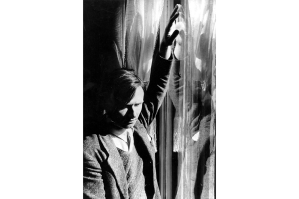In the spring and summer of 1667, London began to see some odd goings-on. Seven years after the restoration of King Charles II to the throne — after England’s republican experiment under Oliver Cromwell ended in 1660 — and one year after the Great Fire had laid waste to the city, things were rather tense: the second Anglo-Dutch war was under way and, by the end of June, there would even be the fear of a Dutch invasion making its way up the Thames.
But oddly, it wasn’t wars, invasion threats or geopolitical goings-on that caused the great and the good of London society to exchange frantic missives. At the beginning of April, a young man-about town wrote a rollickingly bizarre letter to his father. Amid an apology for getting married without telling him (“I beseech your Lordship’s blessing”) and a request for money, Charles North padded his epistle with all the gossip he could think of to distract his father.
One story he told — after skating over the King’s anger at one courtier, and the war “with Holland” — almost defies belief. While he had been sitting at the theater, waiting patiently for the show to start, a woman had entered the playhouse in a “triumphal chariot” pulled by “eight white bulls.” She then sat down in her box, but rather distracted the audience from the theatrical action: she was wearing a dress cut below the line of her breasts and topped it all off with scarlet-trimmed nipple tassels.
By May, there were reports of a woman making her way round London clothed all in black velvet, with her servants and horses decked out to match. This glamorous, dazzling monochrome, driven in a silver coach, was followed around the streets by crowds and mobbed by hundreds of children — an image reminiscent of a rock star at the height of fame. In his diaries, Samuel Pepys described her as some magical, imagined creature: “the whole story of this lady is a romance, and all she do is romantick.”
But, by June, the romance had soured into something more mysterious, perhaps even dangerous. Letters crisscrossed the capital describing her as a fire-breathing “chimera,” and people avoided her for “fear of infection.” The writer Katherine Jones — sister of the scientist Robert Boyle — was even more damning. In her view, this woman who had so captured the city had only avoided being sent to Bedlam (the infamous asylum) because she was “too rich to be sent thither.” Nevertheless, Jones quipped, she was “mad enough to convey the title to her place of residence.”
Who was this woman who was fascinating — and terrifying — London society? She wasn’t, despite what Pepys imagined, the mythical “Queen of Sheba”; nor was she, despite her appearance at the theater, some fantastically brazen whore. The woman who caused such a disturbance in London in spring 1667 — from crowds following her every move, to stern remonstrances at court from the Lord Chamberlain for dressing her servants in “affected velvet caps” — was Margaret Cavendish, the first Duchess of Newcastle.
Now confined to archives and the pages of history books — or better remembered by Virginia Woolf’s cruel assertion that she was a “giant cucumber” and a “bogey to scare clever girls with” — Margaret Cavendish was an early modern celebrity. She gained her scandalous reputation by being one of the first English women to publish her writing professionally (and was even, perhaps, paid for her writing earlier than Aphra Behn, the woman who is normally lauded as the first to earn a living by her pen).
In her twenty-three works — published between her debut in 1653 and her death in 1673 — Cavendish wrote about everything from women’s lives and the inequality of marriage to science, atoms and her thoughts on how the world worked. She even invented a new genre. The Blazing World (1666) is a riotous, campy prose-romance — featuring everything from anthropomorphic bear-men to a moment of lesbian love — but it is also, crucially, one of the very first works of science fiction. With her genre-bending and her endless writing, Cavendish’s importance — for early modern philosophy, feminism, women’s writing and the development of seventeenth-century science — cannot be overstated.
Born Margaret Lucas in 1623 in St. John’s Abbey in Essex, Cavendish was the youngest daughter of a wealthy but not particularly aristocratic family. By Margaret’s late teens, her whole world had fallen apart: as a Royalist family in a predominantly Puritan area, the Lucases suffered violent raids on their home when England descended into all-out civil war. The conflict saw Cavendish’s brothers fight — and die — on the side of King Charles I, while Cavendish herself left her family to join the court of Charles’s wife, Henrietta Maria, as a lady-in-waiting. The war shaped Cavendish’s life: it took her from Essex to the court at Oxford, and from Oxford to exile in France, where she later met her husband.
William Cavendish — initially the Marquess of Newcastle, later the first Duke — was some three decades older than Margaret, but their relationship was still one of intense love and support. William helped Margaret with the publication of her books and wrote poems which lauded her intelligence and “pure wit.” After the pair proved unable to have children — a cause of great sorrow to William, who had married his second wife at least in part to ensure more heirs — he wrote prefatory poems in which he called her books her “newborn” babes. Through him, Margaret encountered the work of scientists, philosophers, and playwrights from Ben Jonson to Thomas Hobbes.
Was it just this, then — her family’s wealth, and her husband’s aristocratic support — that enabled Margaret to become a famous writer, something so groundbreakingly radical for a woman in the seventeenth century?
This seems too simple an answer, not least for the fact that wealth and aristocracy meant little in English society in the years of the Civil War (and that the Cavendishes were continually impoverished while their estates and fortunes were seized. Rather, Margaret Cavendish was a true virtuoso: a woman who propelled herself into many different genres, and strained against what was expected of her.
When Cavendish published her first book — Poems and Fancies, in 1653 — vanishingly few works by women had made it through a printing press. Those that did were either anonymous — by “A Lady” — or, if they were named, on “safe” subjects, like books of religious devotion, or advice for mothers on raising their children. When Cavendish published her work, she defied all conventions: Poems and Fancies opens with letters declaring that her words, rather than her (non-existent) offspring, are her “babes,” and proceeds in no less radical terms. Instead of conventional theology, Cavendish wrote about atomism — a new theory of matter that claimed the world existed in a continual dance of chance. Rather than poems about contemporary wom- en’s concerns — their families, their children, their devoutness — Cavendish let her flights of fancy stretch to fairies and new worlds. It was no surprise, then, that suggestions of insanity started to swirl around London society — accusations that would plague her until her death, and then continue in academic criticism until shockingly recently. As late as 1979, one literary study argued her work was evidence of her “schizophrenia.”
While not unbothered by these accusations — despite her public ostentation, she was overwhelmingly shy and “bashful” — Cavendish continued to write. From her earliest volume of poetry, she developed her scientific interests. Her theory of “atomism” became one of “vitalist materialism” — a school of thought that replaced the idea of random movement of matter with one of greater structure and control. Cavendish’s oeuvre is one of the earliest English bodies of work that puzzles out what it means to be a woman in a male-dominated society. Cavendish never used the word “feminist” — she was writing two centuries before it would become a part of the vocabulary — but her work is committed to cataloging, and interrogating, female experience; the lives of women in a world which seems set against them. She wrote plays and prose-romances about female separatist communities — women who tentatively, tenderly try their hand at lesbian love or fight battles better than men — and railed against such institutions as marriage that make women little better than “slaves.” It is a considerable irony, then, that Cavendish has long been plagued by sexist readings of her work: either remembered as an adjunct to her husband or dismissed as a mad whore.
Now, 400 years on from her birth, and 350 years after her death, there is no better time to look beyond the spectacle of Margaret Cavendish — the nipple tassels and eight white bulls — and into the blazingly interesting world of thought, feminism and philosophy that lies beneath.
This article was originally published in The Spectator’s December 2023 World edition. Francesca Peacock’s biography of Margaret Cavendish, Pure Wit: The Revolutionary Life of Margaret Cavendish, is published by Pegasus ($30).


























Leave a Reply